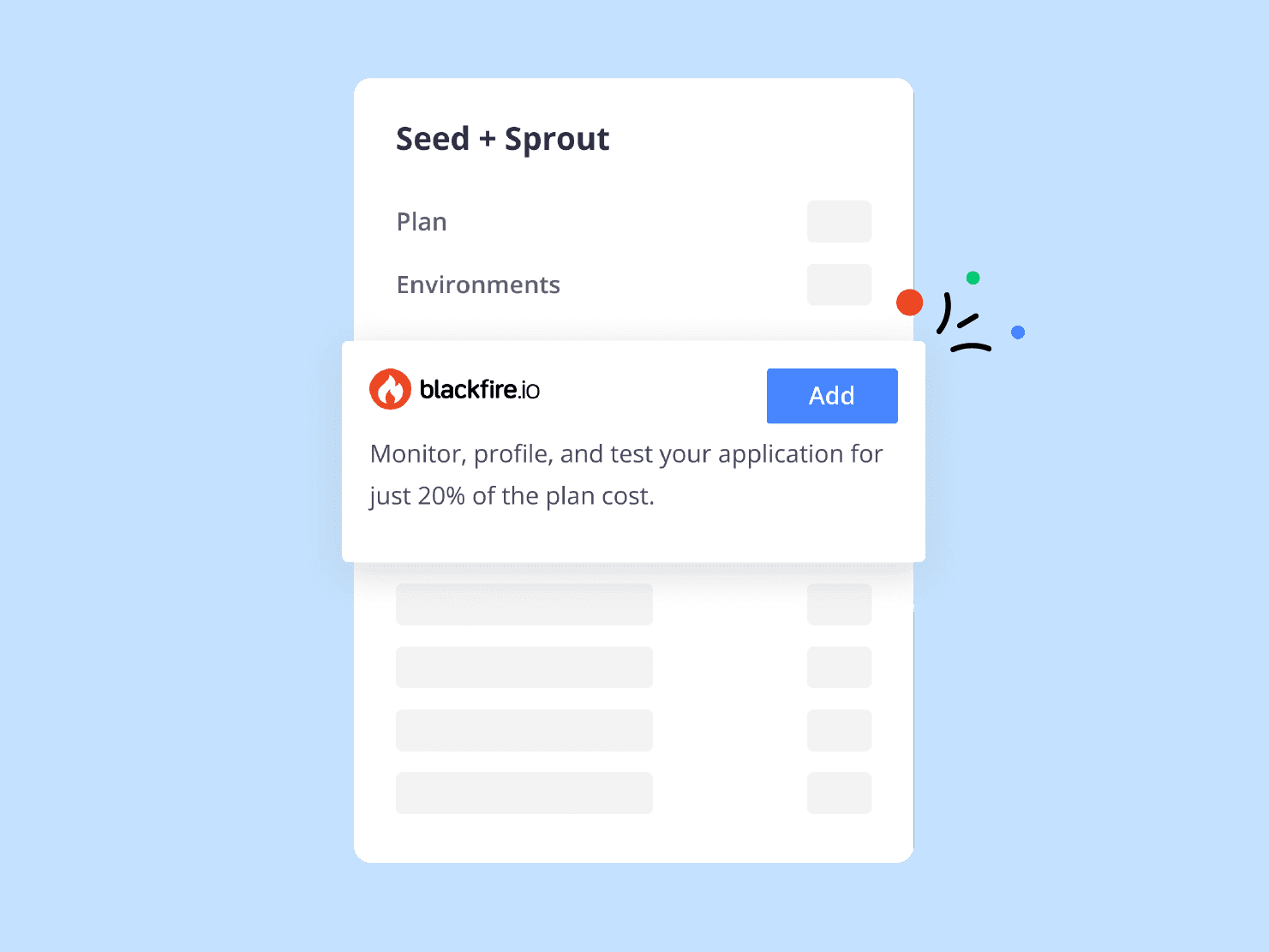We've been there, done that, and we're here to help. Drawing from our extensive experience with customers managing thousands of projects, navigating diverse tech stacks in the open source world, and tackling the complexities of ecommerce, we've put together a list of essential requirements for your next website relaunch.
Consider these fundamentals from the start to ensure you benefit from enhanced site speed and performance, making your project launch smoother and more successful.
Performance matters, especially in today's competitive market.
Site performance is essential for enhanced user experience, improved search engine visibility, increased conversion rates, reduced operational costs and ultimately gaining a competitive advantage. It is a critical aspect of website management that directly impacts the success and effectiveness of your online presence and digital activities.
Maxing out this potential together with your development team is an enticing adventure!
The best results require vast knowledge and experience, combined with consistent monitoring available for all involved parties.
Most mistakes can be avoided right from the start if the requirements in these areas are clearly communicated. We have compiled our observations from numerous projects in this report to facilitate future briefings.
Remember these considerations for your next project meeting. Keep your budget from being hit with costly fixes down the road.
Raising awareness in your organization
Site performance is a critical aspect of website management that directly impacts the success and effectiveness of your digital activities.
You may be aware of site performance issues, but do you have the support within your organization to address them? Engage all stakeholders with these rationales and raise awareness throughout your organization.
User experience
A fast-loading website offers users a seamless browsing experience, reducing frustration and encouraging longer site visits. Slow-loading pages will lead to increased bounce rates. Users abandon sites that take too long to load. A smooth and responsive website enhances user engagement. Visitors can easily navigate and interact with the content. Prioritize site performance to ensure a positive user experience, which is crucial for retaining visitors and building customer loyalty.
Search engine visibility
Google and other search engines consider site speed a ranking factor in their algorithms. A faster website will rank higher in search engine results pages (SERPs), leading to increased visibility and organic traffic. Improved site performance also reduces the chances of search engines penalizing your site for slow load times. Optimize your website's performance to significantly enhance its search engine visibility and make it easier for potential customers to find you online.
Conversion rates
Site performance is the key to conversion rates. A well-optimized website that loads quickly and operates smoothly will lead to higher conversion rates by providing users with a positive browsing and shopping experience. In contrast, slow or poorly performing websites will deter potential customers, leading to lost sales opportunities. By focusing on improving site performance, businesses can create a more conducive environment for conversions, ultimately driving revenue growth.
Reducing operational costs
Businesses can achieve long-term savings and improved profitability by investing in site performance optimization. Faster websites require fewer server resources, reducing hosting and infrastructure costs. Improved performance leads to fewer customer support inquiries related to site speed issues, freeing up resources that can be allocated to other areas of the business. By optimizing site performance, your business can achieve operational efficiency and cost-effectiveness.
Competitive advantage
Gain a competitive edge when your online experience exceeds customer expectations with quick load times, easy-to-navigate menus, and superior performance. Build brand trust and credibility, encouraging customers to choose to navigate to your website over competitors. Consistently deliver high-performance web experiences and position your business as a leader in your industry. Attract more customers and gain a competitive advantage.
Example
Project Overview
We seek to relaunch our website to enhance user experience, improve performance, and drive better results. This project aims to optimize frontend performance and ensure server-side responsiveness in order to meet the highest standards in site speed and performance.
#1 Frontend Performance
Objectives
Enhance user experience by improving the loading speed of the main content, ensuring visual stability during loading, displaying initial content quickly, and optimizing the responsiveness of user interactions.
Optimize front-end assets to ensure faster rendering and smoother interactions.
Minimize layout shifts and delays in content rendering to provide a more visually stable experience.
Requirements for your development team
Conduct a comprehensive audit of front-end assets, including HTML, CSS, and JavaScript, to identify opportunities for optimization.
Implement best practices for code minification, compression, and bundling to reduce file sizes and improve loading times.
Optimize images and multimedia assets using efficient formats and compression techniques to minimize bandwidth usage and improve rendering speed.
Prioritize critical resources and defer non-essential scripts to improve Time to Interactive (TTI) and overall site responsiveness.
Implement lazy loading for images, videos, and other content to prioritize loading above-the-fold content and improve perceived performance.
Utilize performance monitoring tools to track and analyze frontend performance metrics, identify bottlenecks, and iterate on optimization efforts.
Key metrics
- Largest Contentful Paint (LCP)
- Cumulative Layout Shift (CLS)
- First Contentful Paint (FCP)
- Interaction to Next Paint (INP)
These metrics pertain to the performance of the front-end implementation of the website. They measure aspects such as the speed of content rendering, the stability of layout shifts during loading, and the responsiveness of user interactions. Improving these metrics involves optimizing front-end assets like HTML, CSS, and JavaScript to ensure a faster, smoother user experience.
#2 Server-Side Responsiveness
Objectives
Reduce Time to First Byte (TTFB) to improve server response times and minimize network latency.
Minimize Total Blocking Time (TBT) to enhance server-side responsiveness and reduce delays in processing user requests.
Requirements for your development team
Assess server-side infrastructure and configurations to identify opportunities for optimization, including server caching, resource allocation, and network optimization.
Implement server-side caching mechanisms to store frequently accessed resources and reduce server load.
Optimize database queries, API calls, and server-side scripts to minimize processing time and improve response times.
Implement asynchronous processing for long-running tasks to minimize Total Blocking Time (TBT) and improve site responsiveness.
Utilize server monitoring tools to track server performance metrics, identify performance bottlenecks, and implement proactive optimizations.
Conduct load testing and performance profiling to simulate high-traffic scenarios and ensure server-side responsiveness under peak loads.
Key metrics
- Time to First Byte (TTFB)
- Total Blocking Time (TBT)
These metrics focus on the responsiveness of the server-side infrastructure supporting the website. Time to First Byte (TTFB) measures the time it takes for the server to respond to requests, indicating server performance and network latency. Total Blocking Time (TBT) quantifies the delay users experience due to long tasks executing on the server. Improving these metrics typically involves optimizing server configurations and reducing server response times to enhance overall website performance.
#3 Caching
Objectives
Implement caching strategies to improve website performance and reduce server load.
Leverage browser caching to store static assets locally and reduce subsequent page load times.
Utilize HTTP caching headers to instruct browsers and proxies on how to cache and serve content efficiently.
Requirements for your development team
Configure server-side caching mechanisms, such as Redis or Memcached, to store frequently accessed data and reduce database queries.
Set appropriate cache-control headers for static assets to control caching behavior and expiration times.
Implement cache invalidation strategies to ensure timely updates and prevent stale content from being served.
Key metrics
- Bandwidth Utilization
- Cache Hit Ratio (CHR)
Caching reduces bandwidth usage by serving cached content, which lowers operational costs and speeds up content delivery. A high cache hit ratio indicates that a significant portion of requests are being served from the cache, reducing the load on the server and improving response times.
#4 Assets (CSS, Javascript)
Objectives
Optimize the delivery of static assets to minimize file sizes and improve loading times.
Reduce the number of HTTP requests and network roundtrips required to fetch assets from the server.
Requirements for your development team
Concatenate and minify CSS and JavaScript files to reduce file sizes and improve loading times.
Implement asset compression techniques, such as gzip or Brotli, to further reduce file sizes and improve transfer speeds.
Utilize asset bundling techniques to combine multiple assets into a single file, reducing the number of HTTP requests required to load the page.
#5 Images
Objectives
Optimize images to reduce file sizes and improve loading times without sacrificing visual quality.
Implement responsive image techniques to serve appropriately sized images based on device characteristics and screen resolutions.
Requirements for your development team
Compress images using lossless compression techniques to reduce file sizes while maintaining visual quality.
Implement lazy loading for images to prioritize the loading of visible content and defer offscreen images until they are needed.
Utilize modern image formats, such as WebP, where supported, to further reduce file sizes and improve loading times.
#6 Monitoring
Objectives
Establish a comprehensive monitoring system to track website performance metrics and identify areas for improvement.
Monitor frontend and server-side performance in real time to detect issues and address them proactively.
Requirements for your development team
Set up performance monitoring tools, such as Google Analytics or New Relic, to track key performance metrics, including page load times, server response times, and user interactions.
Configure alerts and notifications to notify the team of any performance issues or anomalies detected in the monitoring system.
Regularly review performance metrics and analytics data to identify trends, patterns, and areas for optimization.
Identify areas for improvement and remove roadblocks
If any of the following factors apply to your website, there’s a high probability that site performance needs improvement.
❌ Industry Standards and Norms:
In certain industries or geographies, underperforming websites may be more common, leading to lower client expectations and less pressure on technical teams to prioritize performance optimization. Make sure you measure up not only to the champions in your industry but also to top-performing sites in general.
❌ Lack of Awareness or Expertise:
Some development teams may lack awareness of the importance of site performance or may not possess the expertise required to optimize performance effectively. They may focus more on aesthetics or functionality without considering the impact on speed and performance.
❌ Your Priorities as a project owner:
In some cases, project owners may prioritize other aspects of website development, such as design or features, over performance optimization. Even well-established and proven processes can be compromised as development teams prioritize meeting your requirements and deadlines, diverting the team's attention from basic performance tasks.
❌ Implicit assumptions rather than defined goals:
It's common to assume that performance optimization is inherently part of the standard website development process, but without explicitly requesting it, this crucial aspect might be overlooked. Even if the technical factors of performance improvements align well with the business requirements, you may not fully comprehend the significance of site performance or how to effectively evaluate it. It is your responsibility to ensure performance optimization is a clear priority in your project to maximize your website's potential.
❌ Budget Constraints:
Tight budgets may limit the resources available for performance optimization. Development teams may be forced to cut corners or prioritize other aspects of the project to stay within budget constraints, leading to compromises in site performance.
❌ Time Constraints:
Tight project deadlines may limit the time available for thorough performance optimization. Development teams may prioritize completing the project on time over optimizing performance, especially if a quick turnaround is required.
❌ Limited Accountability:
In some cases, development teams may not face significant consequences for delivering non-performant websites. Project owners may not have the expertise to assess site performance effectively, or they may not prioritize it as a key criterion for evaluating the development team's work.
❌ Lack of Incentives for Improvement:
Without significant incentives or penalties for delivering non-performant websites, development teams may not feel compelled to prioritize performance optimization. As long as the requirements are satisfied with the overall result, development teams may see little reason to invest additional time and resources into optimizing performance.
Take action
Set Clear Performance Targets
Define specific performance metrics such as page load time, Time to First Byte (TTFB), and Google's Core Web Vitals thresholds (e.g., LCP, FID, CLS).
Establish ambitious yet achievable goals to ensure the website meets the highest standards in speed and performance.
Prioritize Performance in Design and Development
Emphasize to your team the importance of prioritizing performance optimization throughout the design and development process.
Encourage them to adopt best practices such as minimizing HTTP requests, leveraging browser caching, and optimizing code and assets.
Optimize Content for Speed
Stress the significance of optimizing all website content, including images, videos, and scripts, for fast loading times.
Encourage the use of efficient image formats, compression techniques, and lazy loading to reduce page weight and improve performance.
Implement Efficient Hosting and Infrastructure
Discuss the importance of selecting a high-performance hosting provider with robust infrastructure and reliable server configurations.
Consider options such as Content Delivery Networks (CDNs) to distribute content closer to users and reduce latency.
Adopt Lightweight Frameworks and Technologies
Recommend the use of lightweight frameworks, libraries, and technologies that prioritize speed and efficiency.
Encourage your development team to minimize reliance on heavy third-party plugins or scripts that could impact performance negatively.
Test Across Devices and Network Conditions
Stress the importance of comprehensive testing across various devices, browsers, and network conditions to ensure consistent performance.
Include performance testing tools and services to identify and address any potential bottlenecks or issues proactively.
Continuous Monitoring and Optimization
Emphasize the need for ongoing monitoring and optimization post-launch to maintain peak performance levels.
Implement tools for performance monitoring and analytics to track key metrics and identify areas for improvement.
Educate and Empower the Team
Provide resources, training, and support to empower the team to make informed decisions and implement effective performance optimization strategies.
Foster a collaborative environment where feedback and insights are shared openly to drive continuous improvement in site speed and performance.
By following these basic ideas, you'll ensure that your project takes advantage of the critical importance of speed and performance optimization and that the results of your relaunch project meet the highest criteria in these areas.
 Switching to Platform.sh can help IT/DevOps organizations drive 219% ROI
Switching to Platform.sh can help IT/DevOps organizations drive 219% ROI Organizations, the ultimate way to manage your users and projects
Organizations, the ultimate way to manage your users and projects





